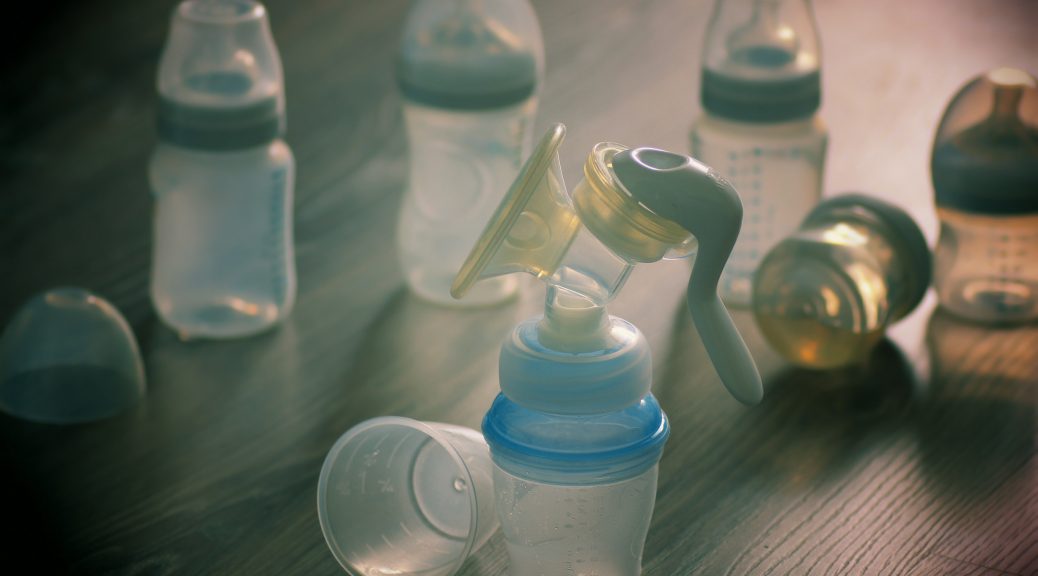
How to warm up pumped breast milk
When you start thinking about how to warm up pumped breast milk, you may have questions, especially the first few times you do it. But breast milk does not require much different handling than any other food. And heating breast milk is not very different from heating any other products. The only thing you have to keep in mind is that human milk is a living liquid, and therefore, mishandling it can cause the protective (living) cells to get lost. In this article, you can find out more on how to store breast milk.
If, for whatever reason, pumped breastmilk is not handled appropriately and it exceeds 65ºC (149ºF) when heated, it will lose its immunological qualities. However, it will still be breastmilk, and the baby, once it has cooled down to the right temperature, can still have it.
Let’s take a look at the different ways of how to warm up or thaw breast milk:
In a recipient with hot water
This is one of the best-known methods for heating or thawing milk. To do this, you only need to heat water in a pan, like someone who heats water to boil something. Once the water is off the heat, the milk recipient (such as pumped milk in a bottle or a freezer bag) is placed inside. The time it will take for the milk to be ready will depend on whether it is frozen or just chilled. It should reach a low temperature; 28ºC (82ºF) is usually more than enough, and if it is summer and the baby is over 4 months old, they usually also like fresh milk at a cooler temperature a lot.
Let it warm up under running hot water
The process is the same as the previous one, but it’s less ecological because a lot of water is wasted in the process. This method can be used to temper breast milk quickly if it comes just out of the fridge. If the breast milk is frozen, it’s more practical to use other methods. You can also heat water in a microwave and immerse the milk container in the water.
Bottle warmer
Yes, bottle warmers can also be used to temper or thaw breast milk. But in order to use them, the milk must be in a small bottle. If the milk has been collected in freezer bags, the first step is to remove the milk from the bag (it can still be frozen), put it in a bottle, and proceed to defrost. With some bottle warmers, it’s possible to control the temperature and avoid overheating, which, as mentioned above, only affects the destruction of living cells.
Microwave
This is the most controversial method of warming up breast milk that is often completely condemned. As always, at LactApp, we believe that having all the information is the key to being able to decide and that prohibitions only lead to ignorance and possible mistakes.
Breast milk can be heated in a microwave. But the risk of this process, which is why it is not recommended, is because the process of warming up breast milk in a microwave is uneven. In other words, the milk is not heated evenly, and this is a danger. If you then touch the milk and it’s not heated evenly and you don’t mix it and check it very carefully, giving this milk to your baby could cause them burns.
Therefore, the first thing to remember is to leave the milk in a microwave only for a few seconds. Don’t heat up breast milk in a microwave for minutes. Then, take the container out of the microwave, carefully mix the milk, and once this is done, check again if it needs a few more seconds or if it’s ready. If you forget and the milk comes to a boil, it’s likely that all the living cells in the milk have been lost. However, once the milk is at the right temperature again, it can still be given to your baby because it’s still milk.
Letting it get to room temperature on its own
You can also leave the refrigerated milk at room temperature and offer it to your baby within the next hour. When babies are older than four months, and if it is hot, you can also offer the milk to the baby cool, which they usually like very a lot.
Whichever method you choose, always remember to check that your baby’s milk is not too hot, which can cause burns to the baby. Adults eat and drink quite hot things, but babies don’t need to have their food heated at high temperatures. Between 28-30 ºC (82-86ºF), which does not feel hot to the touch, is the most appropriate temperature to offer to the baby.